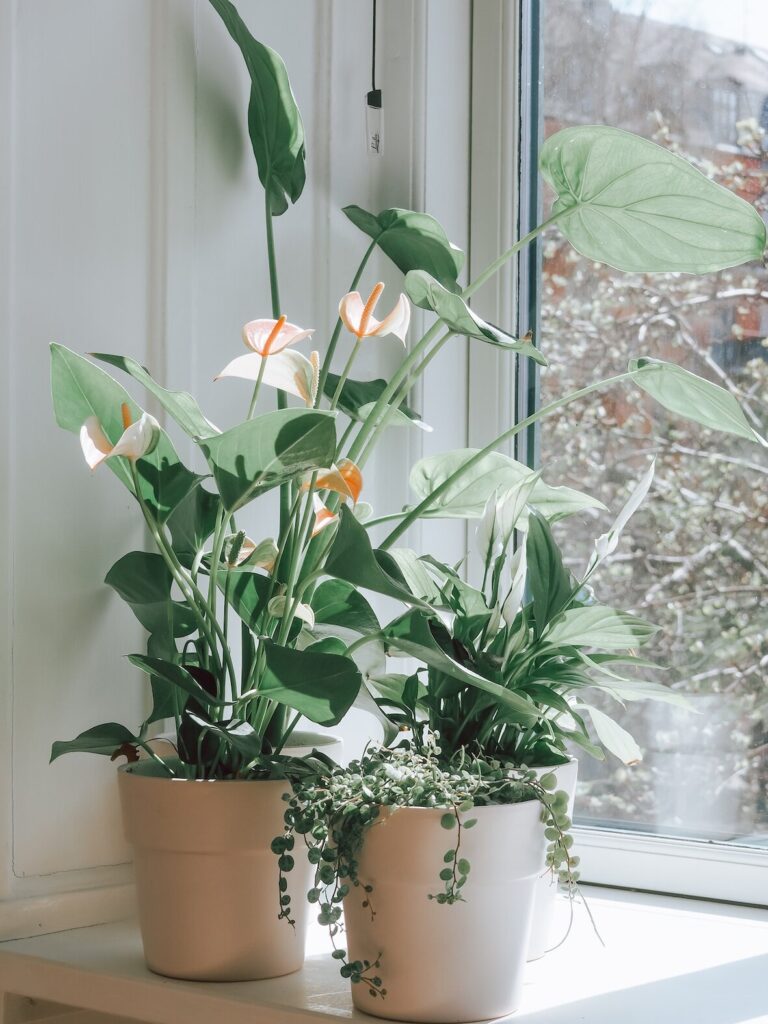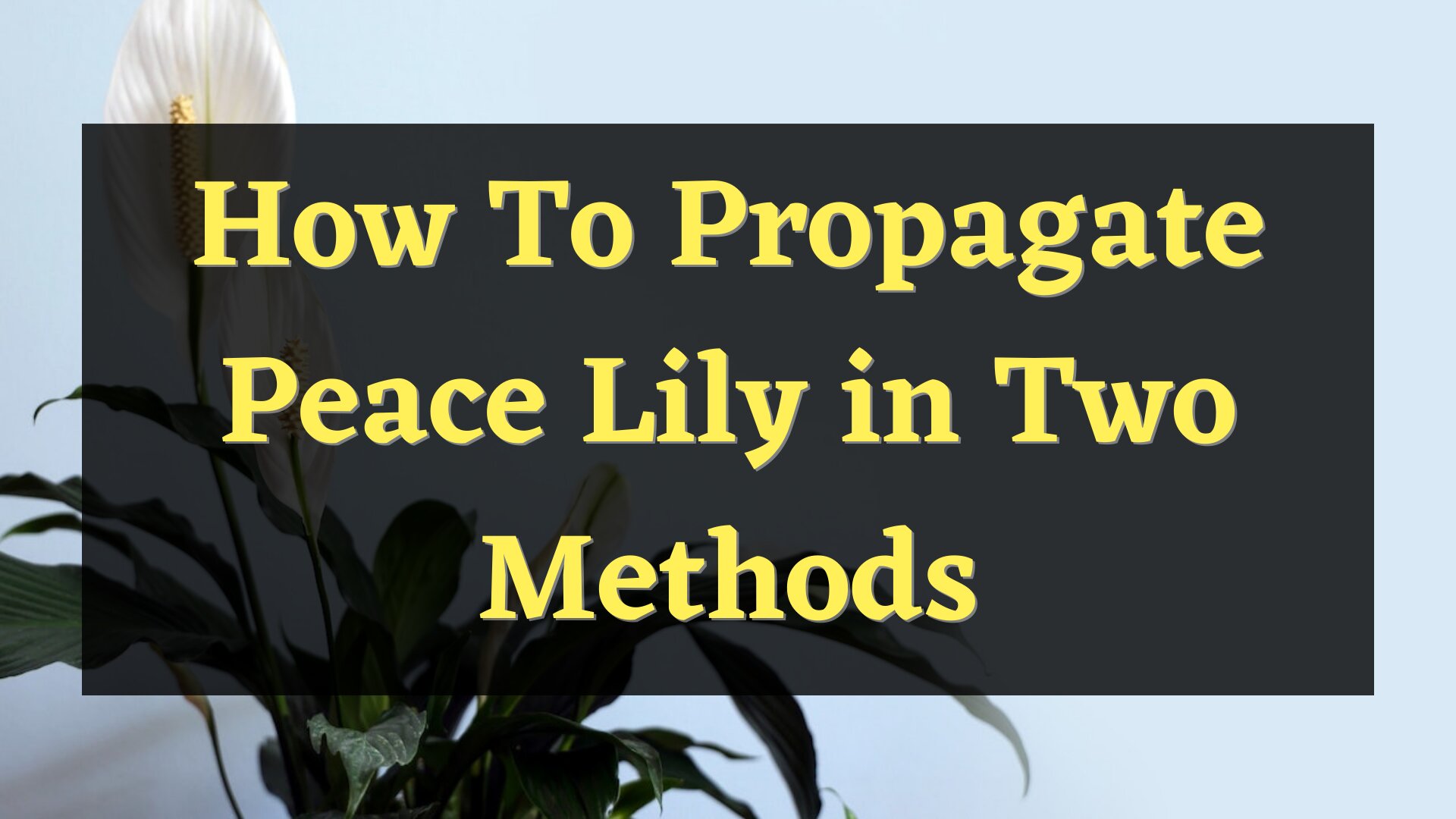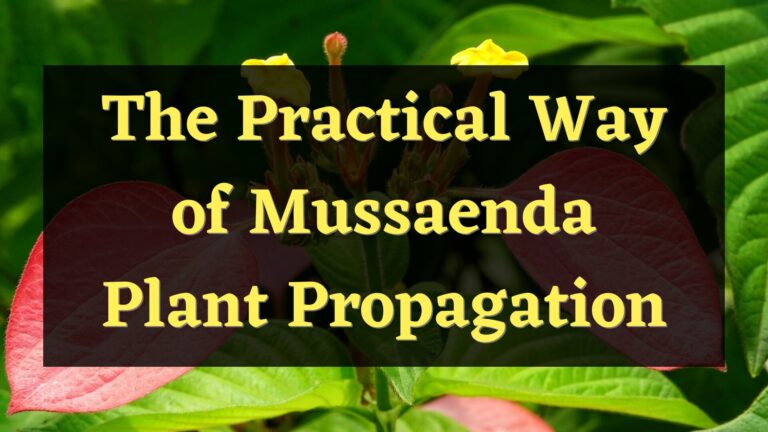The peace lily is a flowering plant that belongs to the genus of Spathiphyllum. It is beneficial to health because it eliminates toxins from the air. The ideal temperature for peace lily is 18 to 26 degrees Celsius. Knowing how to propagate peace lily properly will increase your plant collection without spending too much. In this article, the process of propagating Peace Lily from cuttings and seeds will be discussed thoroughly.
Propagate Peace Lily from cuttings
Propagating peace lily from cuttings requires proper care and attention because this method doesn’t always result in effective propagation.
Steps in propagating peace lily from cutting

- Prepare all the materials.
- Preparing materials will speed up the propagation process. The things that you will need are a mature peace lily plant, a sharp knife or scissor, disinfectant, powdered rooting hormone, a pot with good drainage, well-draining soil, and water. Disinfect the knife or scissors that will be used in cutting to remove the bacteria on it.
- Cut 5-6 inches of stem from the parent plant.
- Choose a mature and healthy Peace Lily plant. The best season to propagate peace lily is during spring or summer. Cut the stem at a 45-degree angle to expand its surface area for faster water absorption.
- Dip the stem in the powdered rooting hormone.
- The leaves of plant lilies grow directly from roots so it does not contain plant tissue for root development. Rooting hormone powder will help the plant to develop its roots successfully. This is an optional step if a powdered rooting hormone is not available.
- Put the cuttings in soil or water.
- Stem cuttings can develop their roots in water or soil.
- If you will propagate peace lilies in soil using the cutting method, you must plant them in well-draining soil to develop their roots faster. Water it regularly to keep the soil moist.
- If you will propagate peace lilies in water through the cutting method, put an inch of water into the container, cover it with plastic wrap, make a hole on top of the plastic wrap, and insert the stem.
- Transfer them to a new pot.
- When it develops numerous roots with a one-inch length, you can transfer it separately in a new pot.
- Monitor its condition regularly.
- Proper care and attention are necessary to propagate plant lilies effectively. Regular monitoring is necessary to prevent the plant from getting damaged.
Propagate Peace Lily from seeds
Propagating peace lily from seed will take a lot of time. In this method, the propagated plant won’t have the same appearance as the parent plant.
Steps in propagating peace lily from seed
- Prepare all the materials.
- The things that you will need are a pot, well-draining soil, disinfectant, a sharp and disinfected knife or scissors, and an envelope.
- Prepare the pot and soil
- The size of the pot must be fitted for the size of the plant’s root ball. Put soil that is well-draining and has 5.8 to 6.5 PH levels. Maintain soil moisture to regulate the transfer of heat and water energy between the surface of the soil, plant transpiration, and evaporation.
- Access the flower to get the seeds.
- Spadix that has dried out should be removed at the base in the spathe. Harvest the seeds by opening the spadix of the flower.
- Gently scrape the black seeds from the spadix of the flower.
- Light green and brown seeds must not be used because they are still unripe and not ready for harvest. The proper way of removing the spadix on the seed pod is from top to bottom.
- Plant or store the seeds.
- The seeds must be planted in a pot after the harvest. Gently press the seeds at a one-inch depth. Water the pot after you cover the seeds. If the seeds will not be planted right away, you can store them in an envelope.
- Cover the top of the pot.
- The plastic wrap will serve as a greenhouse for the peace lily plant. If plastic wrap is not available, you can use any transparent material to protect peace lily.
- Check the condition of the plant regularly.
- Regular inspections of the plant’s condition are necessary to keep the plant healthy and prolong its life.

FAQs
Can I propagate Peace Lily in water?
Peace lilies can be propagated in water. It can be done using the cutting method or the division method. Put the stem or the clamp of the peace lily plant in a transparent container. Rainwater, distilled water, or tap water without chemicals can be used in propagating the plant.
For the cutting method, put an inch of water in the container and soak the stem in it. For the division method, the base of the plant must be suspended above the waterline. Prevent the leaves and plant base from getting into the water to avoid rotting.
Tip: Use a transparent container to monitor the root development of the plant to immediately remove damaged plants.
How long do Peace Lilies live?
The typical life of plant lilies is 3 to 5 years. Taking good care of plant lilies and planting them in well-draining soil can prolong their life. If you will grow it on water, it will have a life span of 1 year.

Is it good to cut the roots of Peace Lily?
It is alright to cut the roots of peace lily, but root cutting depends on the plant’s condition. The roots of the plant are important because they absorb and transport water and minerals to the stem. You can cut the infected portion of the root to prolong the life of the plant.
Conclusion
The peace lily is a tropical plant that adds an aesthetic and refreshing look to homes and offices. It is a beautiful plant that you can add to your plant collection. In this article, the process of how to propagate peace lily through cuttings and seeds is discussed. Propagation through cuttings is not the most effective way of propagating peace lilies. Propagation through seeds will take a longer time. It can also be propagated through water but it will only have a life span of 1 year.

Elizabeth Mcmillan is a passionate gardener with a strong interest in plants. She used to be a teacher, but Elizabeth has spent the last few years immersing herself in the world of plants, learning about their biology and cultural value and trying out different ways of growing them in her own garden. Elizabeth Mcmillan loves indoor plants, succulents, and cacti, and her friends and family know her as a plant care expert.







